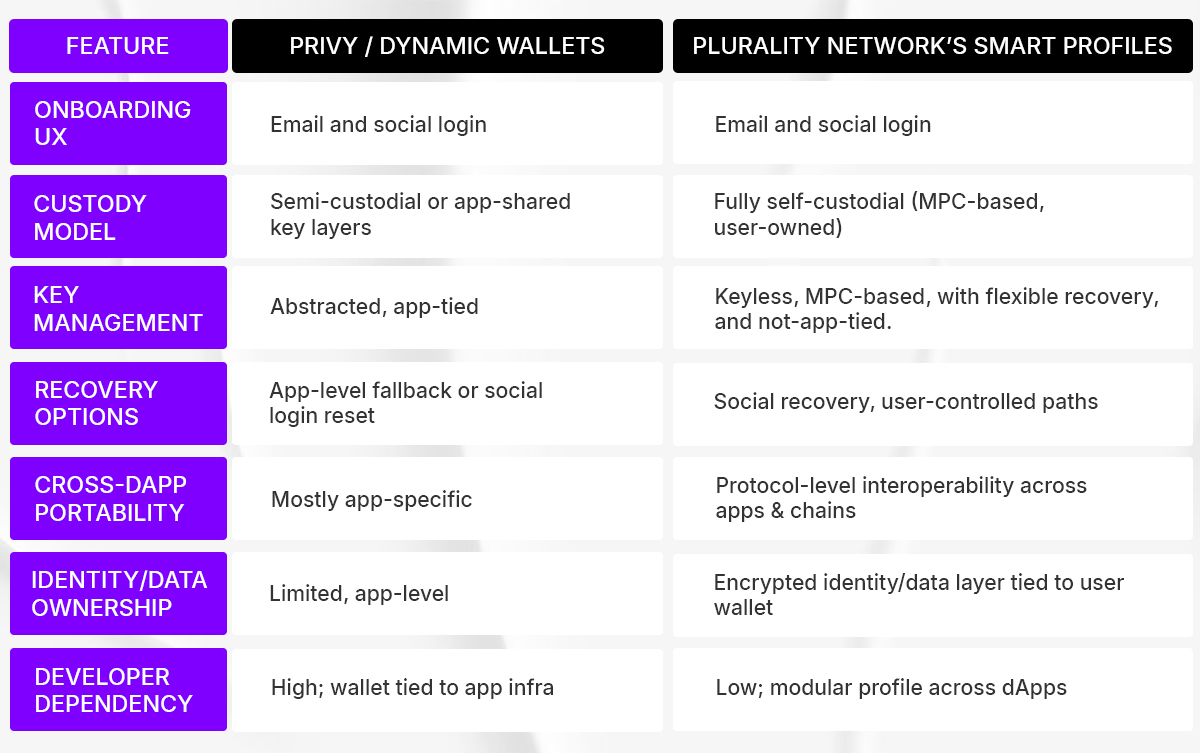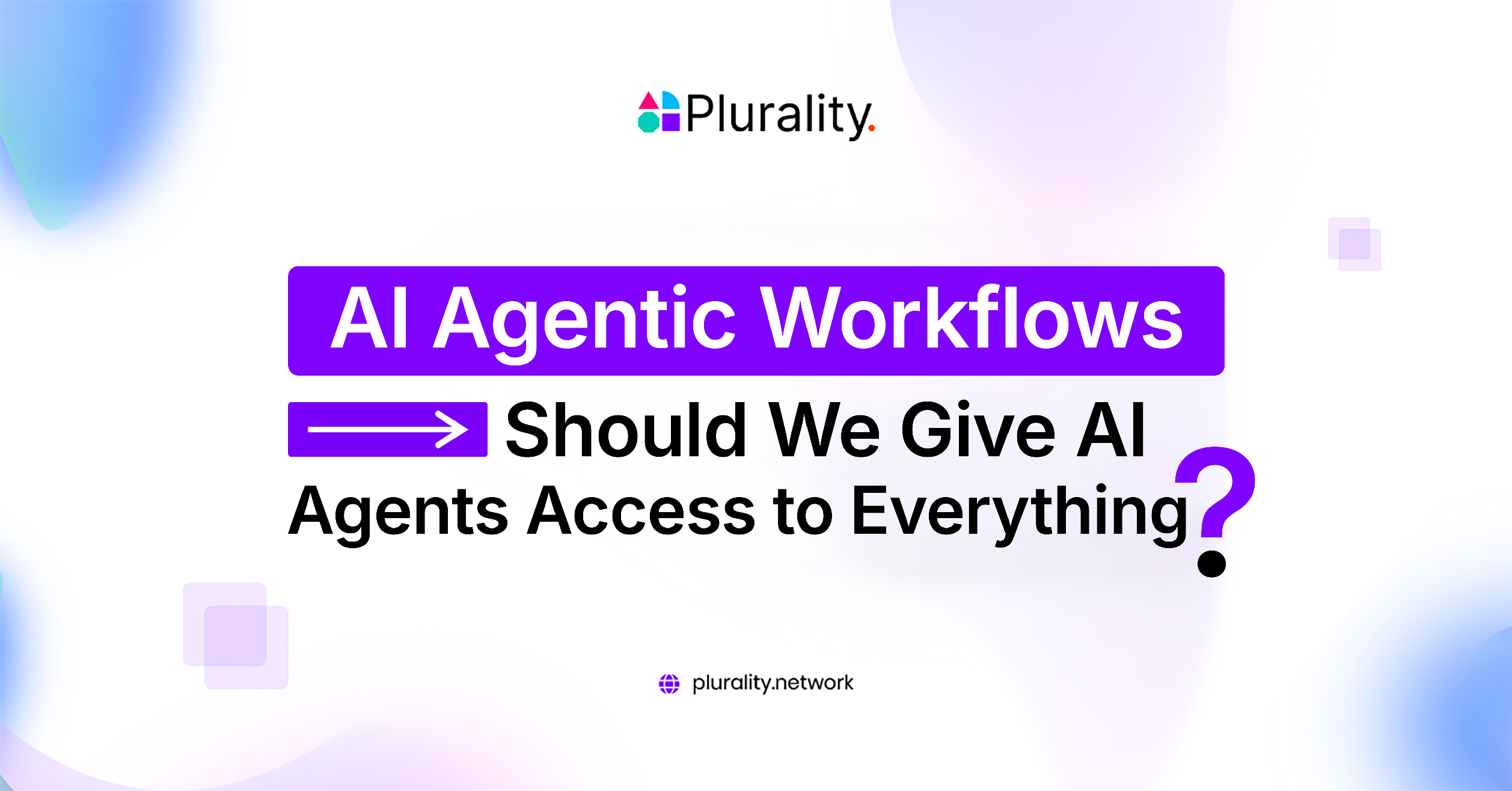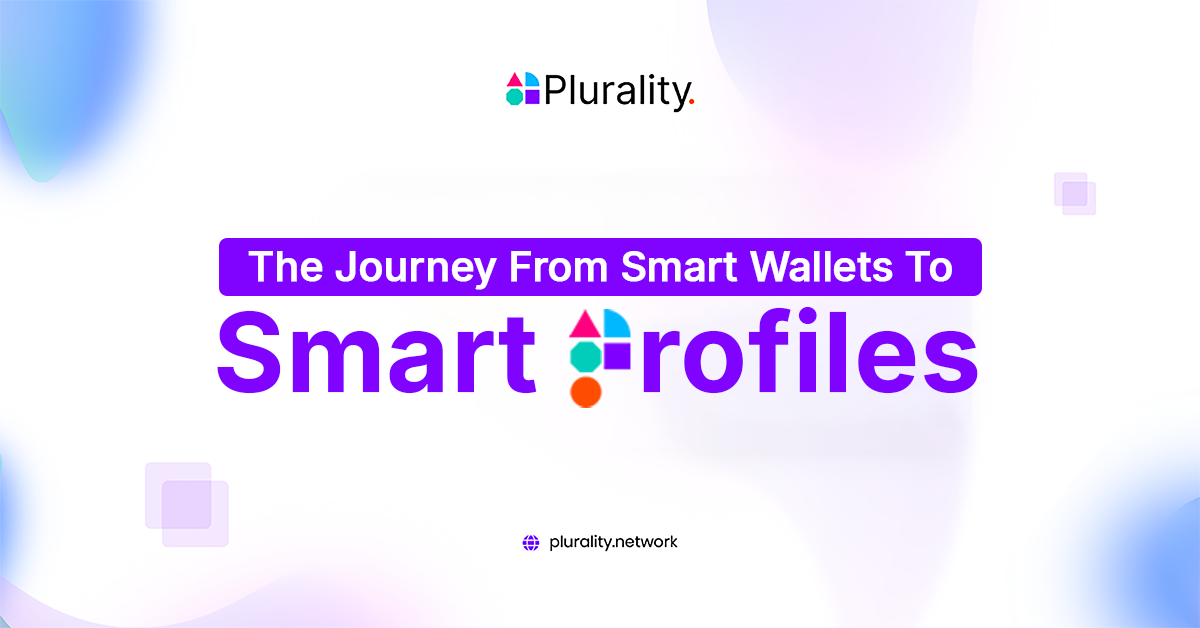Web3 Wallet 101: Everything You Should Know About Standalone, Hardware, and Embedded Wallets
By Alev • April 07, 2025

The Web3 ecosystem is a few miles away from mass adoption, but one question keeps popping up: What is a Web3 wallet? Whether managing tokens, collecting NFTs, or accessing DeFi protocols, a web3 wallet is your digital key to this decentralized ecosystem.
But here’s the thing: all wallets have their own distinct attributes. From hardware wallets to embedded wallets, the spectrum of wallet types is dynamic, as are the expectations around usability, security, and abstraction by an average user.
Wallet 101 guide will help us decode the fundamentals and explore how innovations like wallet abstraction and Agentic AI are shaping the next generation of Web3 wallets, aka Smart Profiles.
What is a Web3 Wallet?
“A Web3 wallet is your digital passport to interact with blockchain applications.”
It manages your crypto assets, signs transactions, and proves your identity across decentralized ecosystems, all without relying on traditional logins or banks. At its core, a Web3 wallet stores your cryptographic keys, which are used to access and control your assets on-chain. Traditional Web3 wallets are limited to storing cryptographic keys and signing transactions.
Web3 wallets are of different kinds based on how the wallet interfaces with decentralized apps (dApps). Some prominent types are standalone wallets, hardware wallets, and embedded wallets. Most people know standalone wallets better, but hardware and embedded wallets are worth studying, for they redefine how users interact with Web3. Let’s get into the nitty gritty of different types of wallets.
What is a Standalone Wallet?
A standalone wallet is software that you need to install separately and where the keys are stored inside your local device, e.g., mobile or browser. Examples are MetaMask and Trust Wallet. The biggest perk is full control over your crypto wallet since it lets you manage your private keys and sign transactions directly.
Pros of Standalone Wallet
- Easy to set up and use on most devices
- Compatible with multiple chains and decentralized apps
- No need for external hardware; just your device and internet connection
Cons of Standalone Wallet
- Private keys are stored on internet-connected devices, increasing exposure to phishing, malware, and scams.
- Highly dependent on user vigilance for security (e.g., backing up seed phrases)
- Risk of losing it if the device is compromised or the recovery phrase is lost
What is a Hardware Wallet?
A hardware wallet, as the name speaks of it, is a small physical device (hardware) that keeps your crypto keys safe by storing them offline. Your assets are safe from online threats like hacking, phishing, or malware because it is not connected to the internet. No online access mitigates most online vulnerabilities. This makes it one of the most secure ways to store your digital assets.
How does a hardware wallet work?
Hardware wallets operate by signing transactions within the device itself. When you initiate a transaction through a dApp interface, the details are sent to the hardware wallet, which is signed using your private key. The signed transaction is then transmitted back to the network without ever exposing the private key externally.
This ensures high security; even if the connected computer is compromised, your private key remains protected.
Are hardware wallets safe?
After looking into how it works, the most natural query is whether they are safe to use. Yes, hardware wallets are one of the most known secure methods for storing digital assets. You must know that the safety of a hardware wallet depends on safe & secure handling practices, especially keeping your recovery phrase offline and protected. While they offer enhanced security, the trade-off often comes in the form of not-so-convenient and user-friendly UX with a higher learning curve for new users.
Pros of Hardware Wallets
- Highest level of security with offline key storage
- Immune to online threats like phishing and malware
- Ideal for long-term, high-value asset storage
Cons of Hardware Wallets
- Requires purchasing and carrying an extra device
- User experience is often clunky and unintuitive for beginners
- Slower and less convenient for frequent transactions
What is an Embedded Wallet?
An embedded wallet is integrated directly into a decentralized application (dApp), offering a seamless onboarding experience for users. This solves many UX problems that previous types did not address more openly. This does not require browser extensions, QR codes, or seed phrases like many traditional web3 wallets; they prefer to operate behind the scenes and simplify access to Web3 services.
They are particularly effective for dApp developers aiming to reduce user friction and deliver a Web2-like experience without compromising on decentralization. Most modern embedded wallets leverage MPC-based infrastructure, enabling social login or passkeys without fully sacrificing user custody.
Solutions like Privy and Dynamic Wallet are at the forefront of this shift. They allow developers to abstract away wallet complexity while still ensuring asset control stays with the user to an extent. These systems are optimized for speed and ease of use but often come with trade-offs in portability, data ownership, and extensibility across dApps.
On the other hand, Plurality Network’s Smart Profiles take the embedded wallet paradigm further. They combine MPC-based security with full user-controlled identity and composability. It’s not just about logging in; it’s about owning your keys, your data, and your on-chain reputation, all in one modular profile that works across dApps and chains.

And if you have not already figured it out, this is also what we offer in our smart profiles!

We have built an embeddable widget for dApps that allows easy creation of wallets and profiles. Overall, our goal is to simplify onboarding through a combination of wallet abstraction tech & AI to increase user retention on web3 platforms through the personalization of experiences. We have built Smart Profiles, a decentralized, interoperable profiles protocol.
“While embedded wallets ease onboarding, Smart Profiles offer a long-term path to true user ownership; not just over assets, but over identity, data, and cross-chain access.”
Pros of Embedded Wallet
- Seamless onboarding with no seed phrases or extensions
- Web2-like login experience via social auth or biometrics
- Reduces friction, boosting user adoption and retention
Cons of Embedded Wallet
- Wallet access is tied to the hosting dApp
- Limited control for advanced users
- Perceived lack of transparency in key handling
What Technologies Are Pushing Web3 Wallets Towards Next Generation?
Advancements in authentication, cross-chain interoperability, and smart contract automation are pushing Web3 wallets toward a new era of usability. Wallet abstraction replaces complex seed phrases and manual approvals with seamless logins via social accounts, while chain abstraction enables frictionless cross-chain transactions and flexible gas payments. These innovations reduce technical barriers, making decentralized interactions as intuitive as Web2 and accelerating mainstream adoption.
Wallet abstraction simplifies the way users access and manage their web3 wallets. Instead of dealing with complex seed phrases, key backups, or manual transaction approvals, users can log in and interact with dApps through familiar methods like social logins or email. This approach improves usability without compromising ownership or security, making asset management more intuitive and less intimidating.
Chain abstraction takes things further by removing the need to understand how different blockchains work behind the scenes. It allows web3 wallets to support seamless cross-chain activity, and users can pay gas fees for any token and move assets across multiple blockchains without switching networks manually. When all processes happen in the background, it creates a frictionless and more unified user experience.
When combined, these layers of abstraction reduce friction, remove technical barriers, and make Web3 easier to navigate, bringing us closer to mass adoption by making decentralized experiences feel as seamless as Web2.
What Does The Future of Web3 Wallets Look Like?
Agentic AI is making them even smarter. It introduces autonomous agents within a wallet capable of executing predefined actions on behalf of the user. These AI-driven agents can handle operations such as:
- Gas fee optimization
- Transaction pre-approvals
- Portfolio rebalancing
- Cross-chain swaps and bridging
- Routine protocol interactions
- Hyper-personalization of user experiences
Rather than manually approving every interaction, users can define preferences and trust parameters that allow the AI agent to act independently within those boundaries. This significantly reduces operational overhead while maintaining user control. Agentic AI also enables intent-based user experiences, where it interprets the user’s goal and optimizes the backend execution path accordingly.
Web3 wallets are transitioning from static key managers to dynamic, intelligent interfaces that manage identity, assets, and intent. Three core innovations are driving this ease of access:
- MPC-based key management for resilient self-custody
- Agentic AI for autonomous execution and personalization
- Wallet abstraction for seamless UX across devices and chains
“And all 3 layers summed up make Plurality Network’s Smart Profiles. With all these, they are not just smart; they are becoming smarter and, ultimately, the smartest of all, such as next-gen web3 wallets.”
Conclusion
Web3 wallets are rapidly maturing to improve usability and reduce friction. Standalone wallets offer flexibility, hardware wallets prioritize security, and embedded wallets streamline onboarding within dApps. With wallet abstraction removing the need for seed phrases and chain abstraction simplifying cross-chain interactions, the Web3 experience is becoming more intuitive and accessible.
Plurality Network’s Smart Profiles combine embedded wallets, MPC-based infrastructure, wallet, and chain abstraction, and Agentic AI to enable seamless access and personalized Web3 interactions, and it is the most holistic UX solution on the market today and will propel Web3 to mass adoption.


